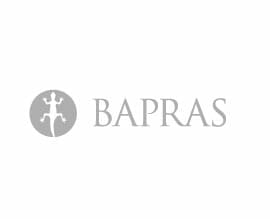November 2018
“The published literature indicates that breast implants are thought to be safe, in general, but can have rare, serious side effects. I endeavour to provide patients with well balanced, up to date information to ensure those deciding to undergo breast implant surgery feel confident in their choice.
Breast implants are amongst the most used and studied implantable medical devices in the world. Data from the Netherlands and the USA estimates that 1 in 30 women have breast implant/s in place in those countries.
The important question is “Do women with breast implants develop more diseases than women without breast implants?”
Since the introduction of breast implants in the 1970s, side effects potentially associated with them have been studied extensively. The medical literature to date indicates that the commonest problems associated with breast implants are capsular contracture, implant displacement and implant rupture. I receive monthly updates on the most recent publications.
We now know that there is a rare form of lymphatic cancer known as Breast Implant Associated Anaplastic Large Cell Lymphoma (BIA-ALCL), which may rarely occur around a breast implant. The risk of this happening in the United Kingdom is currently estimated to be 1:24,000. The disease usually presents with rapid enlargement of one breast due to fluid accumulating over a period of weeks around the implant. It is diagnosed by studying the cells in that fluid. BIA-ALCL is treatable by surgery, and if necessary oncology, especially when diagnosed early. BIA-ALCL seems to be related in some way, that we do not understand at present, to the surface texture of the implant. It has been found in Australia that the more textured the implant the greater the risk BIA-ALCL, however we are not seeing that linkage in the UK at this time. Research continues into this linkage. I have used the same textured Allergan implants since the early 1990s until I became aware of the Australian evidence. I have not seen a case of BIA-ALCL or autoimmune diseases to my knowledge and many patients return to see me for follow up while they have the implants in place.
Auto-immune diseases have been studied extensively in relation to breast implants. There is no conclusive evidence of a causal link with breast implants or with texturing of their surface but it is agreed that more research is needed to assess any potential link with autoimmune diseases. This collection of symptoms is known by several names, such as Autoimmune/Inflammatory Syndrome Induced by Adjuvants (ASIA Syndrome) and Breast Implant illness (BII).
I ask patients, who have undergone implant surgery with me, to return for 2-yearly follow up, for which there is no charge. It is also very important that you give consent for your details to be recorded on the UK National Breast Implant Register. Many countries also have these registers and collect anonymised information about patients with breast implants. This data allows international comparisons of outcomes, within the international legal privacy framework. The International Collaboration of Breast Registry Activities (ICOBRA) is the organization, currently comprising 20 countries, coordinating this work.
To summarise;
It has been concluded by Plastic and Breast Surgeons worldwide that:
- We believe breast implants to be safe in general but they can sometimes have serious, side effects.
- Women presenting with side effects must be taken seriously, supported and investigated.
- BIA-ALCL is rare and, usually, eminently treatable
Therefore, I advise:
- When you have questions, particularly if you are concerned about symptoms that may be related to your implants, please come to talk to me.
- I will do my utmost to ensure you are completely informed about breast implant surgery so that you can make well informed choices.









